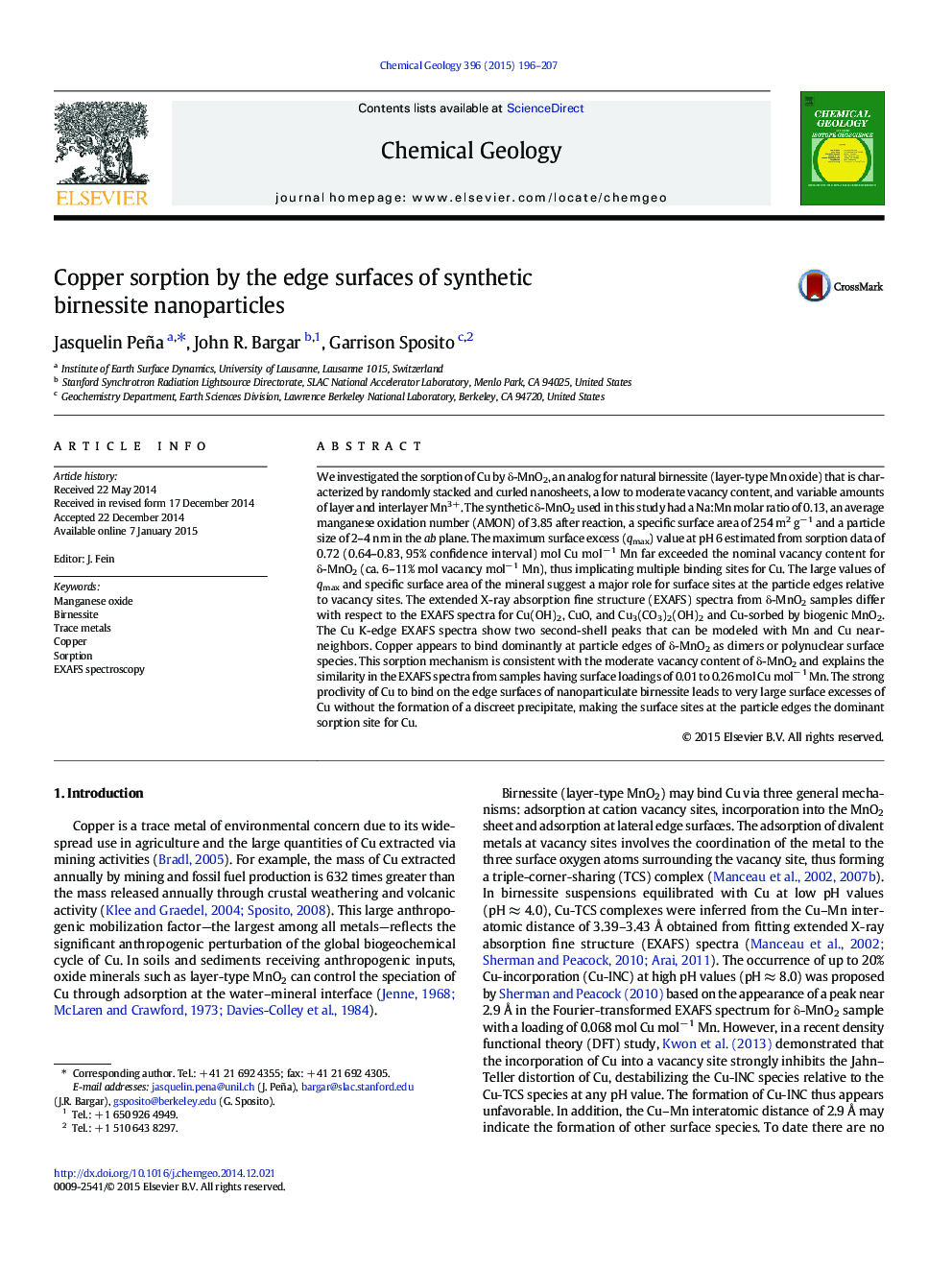| کد مقاله | کد نشریه | سال انتشار | مقاله انگلیسی | نسخه تمام متن |
|---|---|---|---|---|
| 6436518 | 1637577 | 2015 | 12 صفحه PDF | دانلود رایگان |
- The reactivity of the particle edges in nanoparticulate birnessite is investigated.
- EXAFS spectroscopy is used to elucidate the mechanism of copper sorption.
- Jahn-Teller distortion and polymerization limit copper adsorption at vacancies.
- Copper binds dominantly at edges as dimers or polynuclear surface species.
We investigated the sorption of Cu by δ-MnO2, an analog for natural birnessite (layer-type Mn oxide) that is characterized by randomly stacked and curled nanosheets, a low to moderate vacancy content, and variable amounts of layer and interlayer Mn3 +. The synthetic δ-MnO2 used in this study had a Na:Mn molar ratio of 0.13, an average manganese oxidation number (AMON) of 3.85 after reaction, a specific surface area of 254 m2 gâ 1 and a particle size of 2-4 nm in the ab plane. The maximum surface excess (qmax) value at pH 6 estimated from sorption data of 0.72 (0.64-0.83, 95% confidence interval) mol Cu molâ 1 Mn far exceeded the nominal vacancy content for δ-MnO2 (ca. 6-11% mol vacancy molâ 1 Mn), thus implicating multiple binding sites for Cu. The large values of qmax and specific surface area of the mineral suggest a major role for surface sites at the particle edges relative to vacancy sites. The extended X-ray absorption fine structure (EXAFS) spectra from δ-MnO2 samples differ with respect to the EXAFS spectra for Cu(OH)2, CuO, and Cu3(CO3)2(OH)2 and Cu-sorbed by biogenic MnO2. The Cu K-edge EXAFS spectra show two second-shell peaks that can be modeled with Mn and Cu near-neighbors. Copper appears to bind dominantly at particle edges of δ-MnO2 as dimers or polynuclear surface species. This sorption mechanism is consistent with the moderate vacancy content of δ-MnO2 and explains the similarity in the EXAFS spectra from samples having surface loadings of 0.01 to 0.26 mol Cu molâ 1 Mn. The strong proclivity of Cu to bind on the edge surfaces of nanoparticulate birnessite leads to very large surface excesses of Cu without the formation of a discreet precipitate, making the surface sites at the particle edges the dominant sorption site for Cu.
Journal: Chemical Geology - Volume 396, 9 March 2015, Pages 196-207
